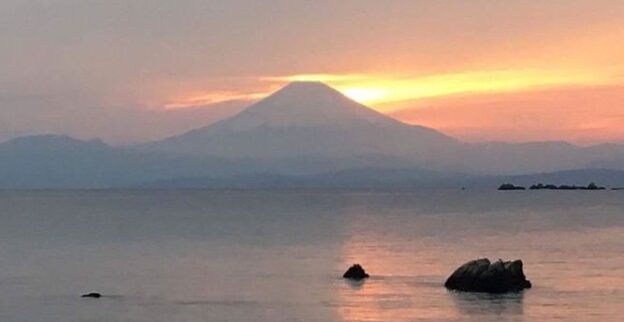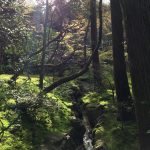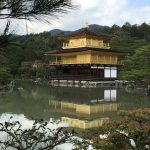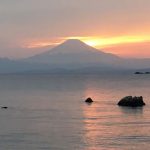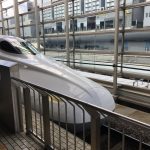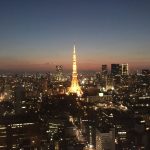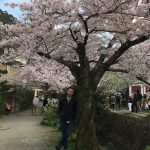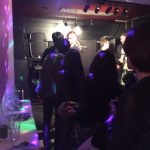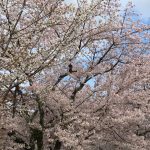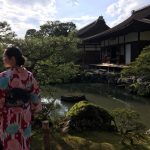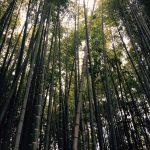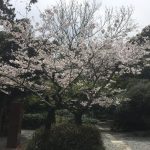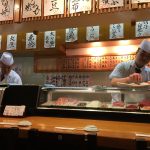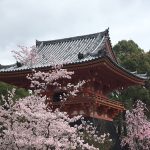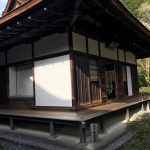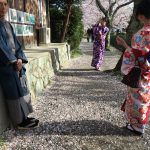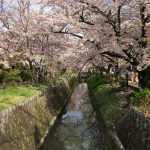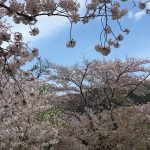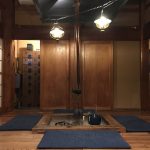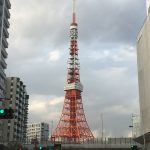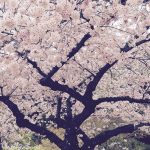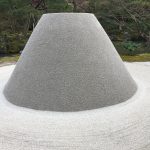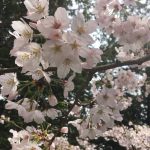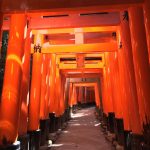Describing my recent trip to Japan and exploring the culture of the Land of the Rising Sun.
![]() [DOWNLOAD]
[DOWNLOAD]
*I’m just an English guy trying to understand Japanese culture. Please forgive me if I get anything wrong! :) ❤️ 🇯🇵
Food & Drink
It’s simply delicious and I don’t know why! What’s the secret, Japan? Why is your food so delicious?
Communication style & language (but I’m planning a whole other episode about English)
Location?
Saying “no”
Politeness
Constant sounds of “gozaimasu”
Heeeee, hoooooo etc
Certain words you always hear and could use: arigato gozaimasu (levels of politeness) doitashimashite, sumimasen, onegaishimasu, nama biru no futatsu onegaishimasu, kawaii, sugoi, gaijin, chotto, dekimasu, desu, desu ka, hai, so desu ka, ne, so desu ne.
Weird and scary things that people don’t often talk about
Natural disasters
North Korea
Some weird sexual stuff
No need to dwell on anything else. Every country has its dark side. I guess that it seems a bit more interesting in Japan because there’s so much emphasis on the cute, childish things. Also, because of the slightly ambiguous religion in Japan it makes you wonder where the moral lines are. A lot of that stuff seems a bit vague, probably because I come from a christian culture where morality is written down in the form of rules – very clear lines which we’re always aware of.
Godzilla
Before coming my brother was staying with me and we watched the new Godzilla film – not the Hollywood version directed by Gareth Edwards, but the recent Japanese one directed by Hideaki Anno, Shinji Higuchi.
Shin Godzilla
What does Godzilla mean? What does it tell us about Japanese culture?
He’s created by nuclear tests in the ocean. He kind of represents the consequences of nuclear testing on nature, or the destructive power of nuclear weapons in Japan, or simply the vast destructive power of nature. At one time or another Japan has been subject to massive levels of destruction from either natural disasters or nuclear weapons. The nuclear attacks are obvious of course – but there were also nuclear tests by the US army after WW2 in waters affecting Japanese fishermen etc. The metaphor of natural disasters is easy to see. The 2011 earthquake and tsunami which affected Fukushima’s nuclear power plant – lots of scenes of destruction similar to what you see in the films. Godzilla kind of represents all of that. It’s interesting that Godzilla has been accepted as a sort of mascot in Japan. They love Godzilla, and in fact he’s sort of a protector of Japan, which I see as them owning this destructive power and turning it into something positive and uniquely Japanese.
The film also portrays the government as very inefficient and unable to make decisions quickly. So many people at various levels of status – all asking for second and third opinions and approval from above before making a decision. Some say this is a comment about the way the government responded to the Fukushima situation – slow to react, a lack of transparency, an inability to make the right decision quickly enough.
Mystery
I don’t have all the answers about this place. There are a lot of mysteries. I think of all the sliding doors, the silence, the shadow, the ambiguity of the religious aspects of life, the weird things in Japanese cartoons that I just don’t understand, and simply wondering what Japanese people are really thinking behind their exterior which is hard to read, and the polite manners. Part of me believes there is just open space inside people, which is a kind of peaceful place where there’s no judgement, where there is no dogma, but there’s a kind of natural balance, like the space between rocks in a zen garden. But maybe I’m romanticising it just a little bit! I expect Japanese people are just as mysterious as the rest of us, because ultimately who does understand the secrets at the heart of the human soul?
Friendship
One thing I can say is cool – I have made friends with some Japanese people in a more sincere way than many others I have met, and I’ve had moving connections with Japanese people that I don’t tend to have with others. I don’t know why. My Japanese friend for example, he said some moving things to me on my wedding day, and on the day I left Japan that seemed to come from some deep place of ancient Japanese wisdom. Yoda stuff, basically.
What did you do?
The basics of where we went and what we did.
Met by our friend, drove to Asakusa, sushi place. Food, beer.
Kamakura – drive – Tokyo skyline etc. Back in Kamakura – “natsukashii” – ‘good old’ or ‘Wow, it feels amazing to be back!’. Cherry blossom in the hills. Time with Moto’s family. Dinner at Matchpoint.
Karaoke
What is special about Karaoke?
Perfect way to have a party. There are whole buildings devoted to it in Tokyo. There are girls in the street who are like karaoke room dealers. You speak to them, book a little room. Go to the building and usually there are loads of drunken salary men pouring out of it. You get into your room – somewhere on the 9F of a big building. They bring you beer and food, direct to the room. There’s a computer database with thousands of songs on it. They’ve got everything. Everyone becomes a performer with their favourite song. It doesn’t matter if you can’t sing, the machine helps you a bit. Some people are brilliant. Everyone comes out of themselves a bit. It’s just you and your friends. Favourite songs get everyone in the mood. Singing is amazing fun. The videos on the machine are hilarious too – totally nothing to do with the lyrics of the song. Usually it’s a couple of people on a date in a random city. Often the lyrics are completely wrong too. We sang a lot of British pop and rock. David Bowie, Oasis and Pulp. My Japanese friend dances like Jarvis Cocker and really gets into the performance. He’s a “plastic gallagher”.
A day in Kamakura – Daibutsu, Cherry blossom avenue, noodles for lunch. Hookokuji temple & bamboo forest. Car drive to Ishiiki beach in Hayama with views of Mt Fuji. Yakitori restaurant in the evening, then another dinner of Japanese barbecue after that! Taxi ride back to the guesthouse – pristine taxi, automatic door.
Travel to Kyoto on Shinkansen. Bento boxes. Arrive in Kyoto. Kyoto was the capital of Japan during many important periods and was also the base of Buddhism. Also there are plenty of Shinto temples there since it was such an important place. Impossible to see everything in just a couple of days. More yakitori that evening and a lovely stroll by the river in the dark.
Kyoto shrine day. Early start and then these temples: Ninna-ji (beautiful rock gardens and pools, plus tons of cherry blossom everywhere. Interesting buildings – It is the head temple of the Omuro School of the Shingon sect of Buddhism and was founded in 888 by the reigning emperor. Various interesting buildings including the Goten, the former residence of the head priest in the southwestern corner of the temple complex. Built in the style of an imperial palace, the graceful buildings are connected with each other by covered corridors, feature elegantly painted sliding doors (fusuma) and are surrounded by beautiful rock and pond gardens.
Then to Ryoanji Temple – with its amazing rock garden.
Then Kinkakuji – the golden temple.
Lunch at a convenience store – just rice balls!
Then across town to Ginkakuji – where there is an amazing sand garden with a kind of replica of Mt Fuji. It’s bizarre. Crowded.
Philosopher’s Walk – cherry blossom everywhere. Also crowded :(
Some shopping for Yukata – found a place selling second-hand yukata in perfect condition. One for me, one for the wife. Lovely patterns. Not too expensive. Met a friend from London, dinner. Matsusaka beef! Apparently it’s more tender because it comes from virgin cows. What, less trauma because the cow had never had sex? How does that work? I remember being distinctly more relaxed after sex (and not just immediately after) but perhaps for cows it’s more traumatic, anyway…
Hot bath at the guesthouse in the communal area. Far less “public” than my experience in Thailand.
Tiny room.
Next day – early start for Fushimi Inari Shrine, an important Shinto shrine in southern Kyoto. It is famous for its thousands of red torii gates, which cover a network of trails behind its main buildings. The trails lead into the wooded forest of the sacred Mount Inari, which stands at 233 meters and belongs to the shrine grounds.
Fushimi Inari is the most important of several thousands of shrines dedicated to Inari, the Shinto god of rice. Foxes are thought to be Inari’s messengers, resulting in many fox statues across the shrine grounds. Fushimi Inari Shrine has ancient origins, predating the capital’s move to Kyoto in 794.
Basically there are these trails that go up to the top of a hill and most of the way is covered by these red gates. The red tori gates are common in the entrance to shrines and represent your movement from the normal world into the spirit world. They’re beautiful and this shrine with rows of thousands of red gates is stunning. The gates are donated by local businesses.
Then more walking around and some shopping for gifts and souvenirs. Shinkansen back to Shinagawa station – meet our friend again. Hotel in the Meguro area.
Gig that evening.
How was the comedy show in Tokyo?
I didn’t know what to expect.
No people, loads of people? Not sure.
Arrived, place was already totally packed. Got upstairs, room goes “huuuuuuu!” as I enter. People are going “luku? Luku? Heeeeee~!” Gasps etc.
Upstairs with other comics, introduce myself etc. We chat. People are surprised and going – can’t you stay? Let’s arrange other shows!
There’s a scene there but mostly for expats in English. This room was full of Japanese people (and a few others) and they’re all here for me!
I walk around upstairs trying to get myself ready, trying to decide what to do.
Audience is lovely, but I think they’re mainly waiting for me.
Apparently some people can’t get in the place. There are people in the stairs just listening.
I did about 45 minutes. Lovely audience of course. They’re lepsters. Interesting to see what worked and what didn’t work. The bits that didn’t work were some of the film references – e.g. Ratatouille, and surprisingly Taken
A lot of my routine is for a French audience. Taken is actually quite specific to a French crowd because the film is set in Paris.
Some bits the audience took on face value – like they took it as being true. E.g. some bits in my star wars routine about how my Dad is an evil strict overbearing tyrant like Darth Vader – not true, but just full of parallels about my life and Star Wars.
Especially the bits about Japan. I’ll play you some extracts later.
A few requests:
The jingle. The italki promo. Some impressions, Obama, Hobson’s Choice!
I wish I’d gone bye bye bye at the end!
Then after the show there was a massive queue of people who wanted to get my autograph. So bizarre.
Also, selfies, handshakes, talking to each person. Gifts.
It was actually an incredible experience meeting each person and hearing about how they listen to my podcast and how it obviously means a lot to them. I’m very glad to know that as always, because I put a lot into it myself.
It was bizarre – I was a celebrity for that evening, with people staring at me and taking my photo and stuff.
*This is where the episode ends, but feel free to read the rest of my notes which I didn’t read out*
Rest of the trip – in Tokyo. Hanging out in Meguro avenue, Daikanyama, Shibuya, Shinjuku. Shopping, sightseeing, eating tasty food. Taking photos. Just enjoying the sunshine.
Dinner at The New York Grill – where Lost In Translation was filmed.
Another day in the Ginza area – shopping for some more gifts like tableware and stuff from Muji which is my wife’s favourite shop. Driving around the imperial palace. Views of Tokyo tower – like The Eiffel Tower but sort of misshapen and not quite as beautiful but iconic in its own way. Went up the World Trade Centre for amazing views of the sunset. Everyone on a date.
Visited a couple of friends – including one at a super cool photography studio that allows you to take 3D photos.
Shabu shabu dinner in Shinjuku with Peter who I used to live with. He was featured in this episode actually (below)
203. A Cup of Tea with Peter Sidell (The Flatmate from Japan)
Visited Asakusa temple – one of the biggest in the Tokyo area and very crowded.
Airport and home! So quick!
Song
You Are Here by John Lennon
https://www.bananachords.co.za/john-lennon-chords-you-are-here
Photos & Video
Gets!
- Kyoto
- Kinkaku-ji
- Mt. Fuji
- Shinkansen
- View from the World Trade Centre
- Philosopher’s Walk
- Queue of LEPsters after the Tokyo show
- Kinkaku-ji
- Bamboo forest, Kamakura
- Sushi at Tsukiji Market
- Kamakura
- Philosopher’s Walk
- Philosopher’s Walk, Kyoto
- Kamakura Guesthouse
- Tokyo Tower
- Ginkaku-ji
- Fushimi Inari Shrine
